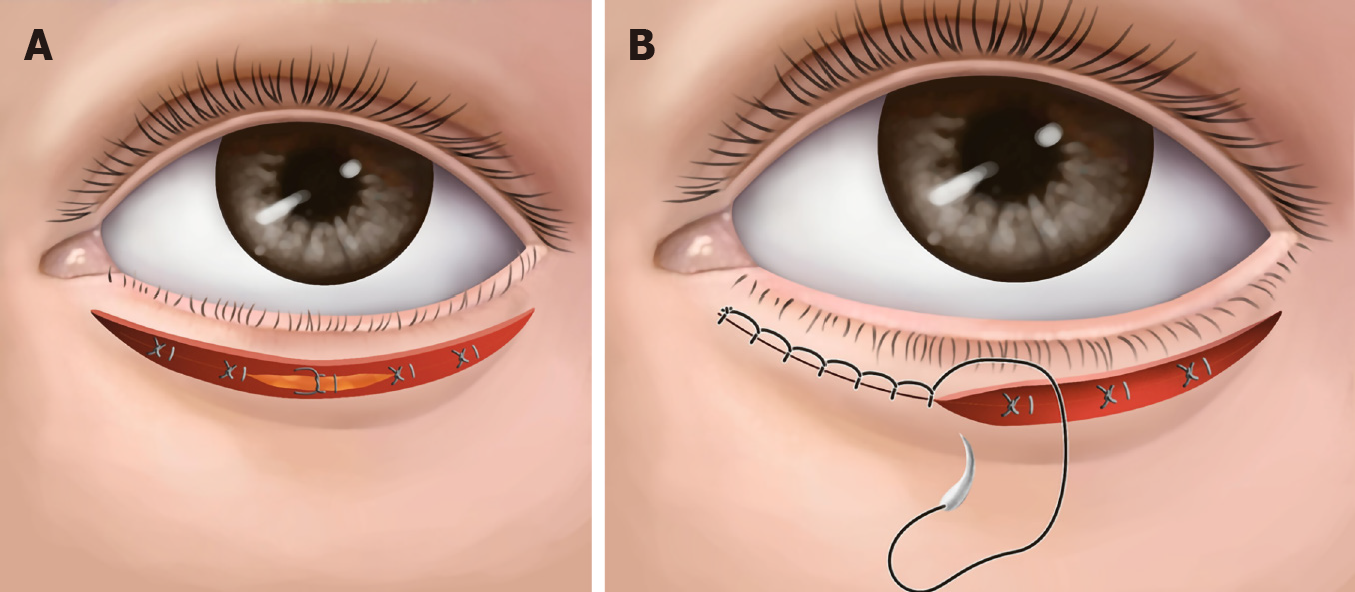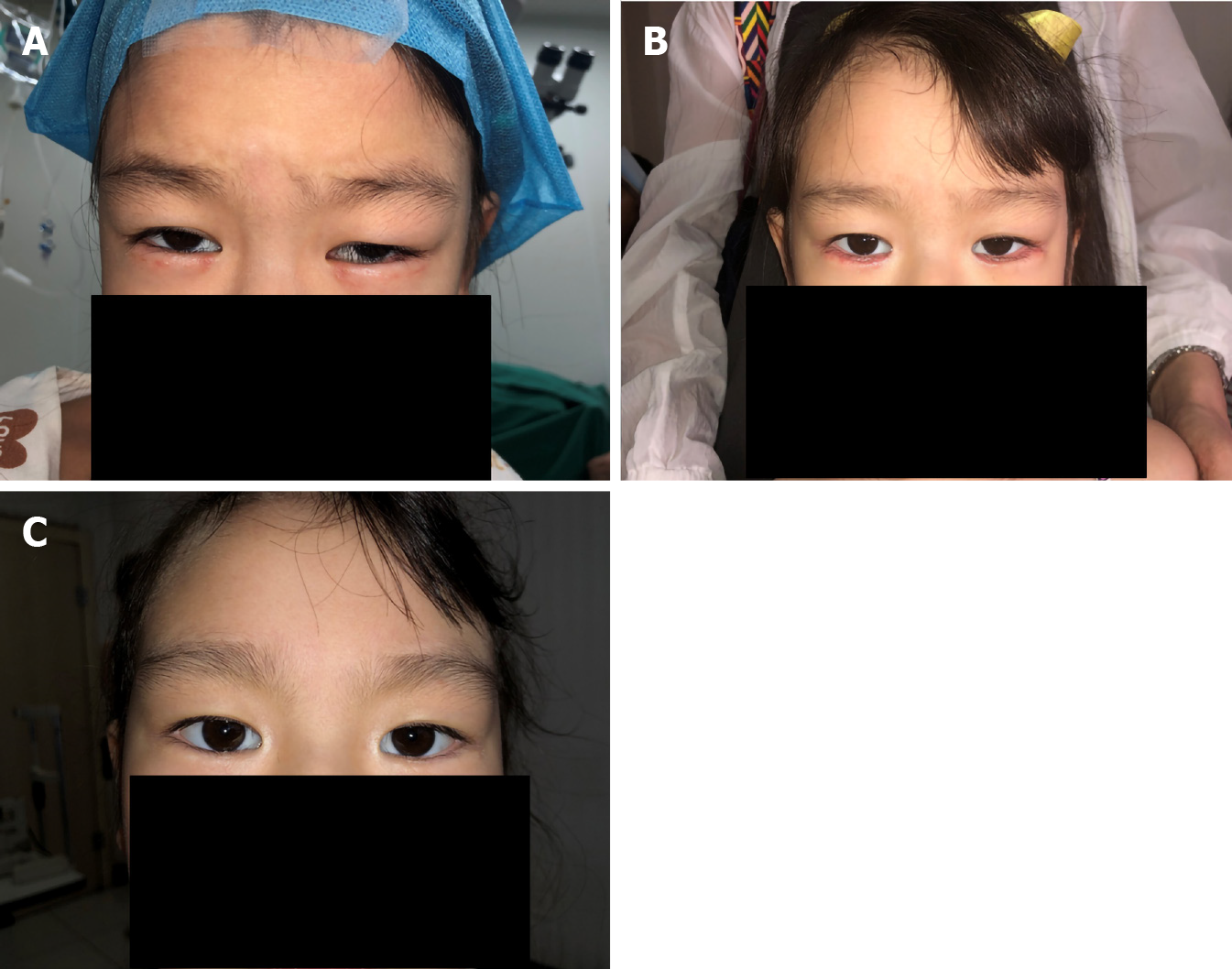Copyright
©The Author(s) 2020.
World J Clin Cases. Dec 26, 2020; 8(24): 6274-6281
Published online Dec 26, 2020. doi: 10.12998/wjcc.v8.i24.6274
Published online Dec 26, 2020. doi: 10.12998/wjcc.v8.i24.6274
Figure 1 Cilia rotational suture technique and continuous edge-locking suture.
A: Buried 7-0 absorbable sutures are placed to allow adhesions to form between the tarsal plate and the subcutaneous tissue of the upper skin flap; B: 8-0 absorbable suture for continuous edge-locking suture to close the skin incision.
Figure 2 After the suture correction failed, the incisional surgery was used.
A: Suture surgery was performed to correct epiblepharon, but the operation failed. There was lower eyelid skin scar, and the eyelashes still swept to the cornea; B: Correction of epiblepharon 7 d before suture removal after operation; C: After 12 mo follow-up, there was no recurrence of epiblepharon, no obvious scar, and good appearance.
Figure 3 Incision correction failed, the operation was corrected again.
A: Incision correction failed, and eyelashes still touched cornea and eyeball; B: Suture removal 7 d after operation, epiblepharon correction, binocular appearance; C: After 6 mo follow-up, there was no recurrence of epiblepharon; D: After 12 mo follow-up, there was no recurrence of epiblepharon, no obvious scar, good appearance, and basic symmetry.
- Citation: Wang Y, Zhang Y, Tian N. Cause analysis and reoperation effect of failure and recurrence after epiblepharon correction in children. World J Clin Cases 2020; 8(24): 6274-6281
- URL: https://www.wjgnet.com/2307-8960/full/v8/i24/6274.htm
- DOI: https://dx.doi.org/10.12998/wjcc.v8.i24.6274











